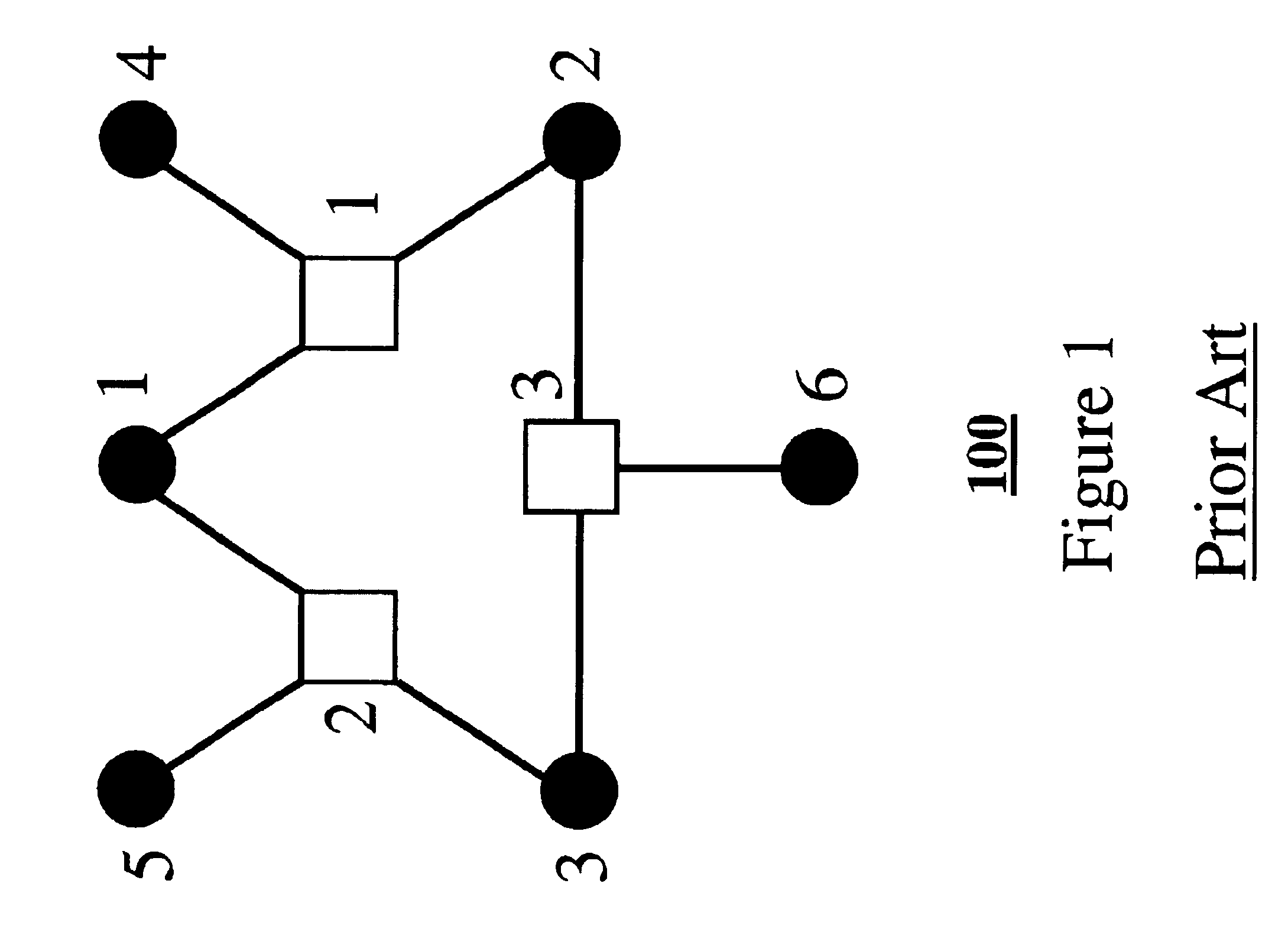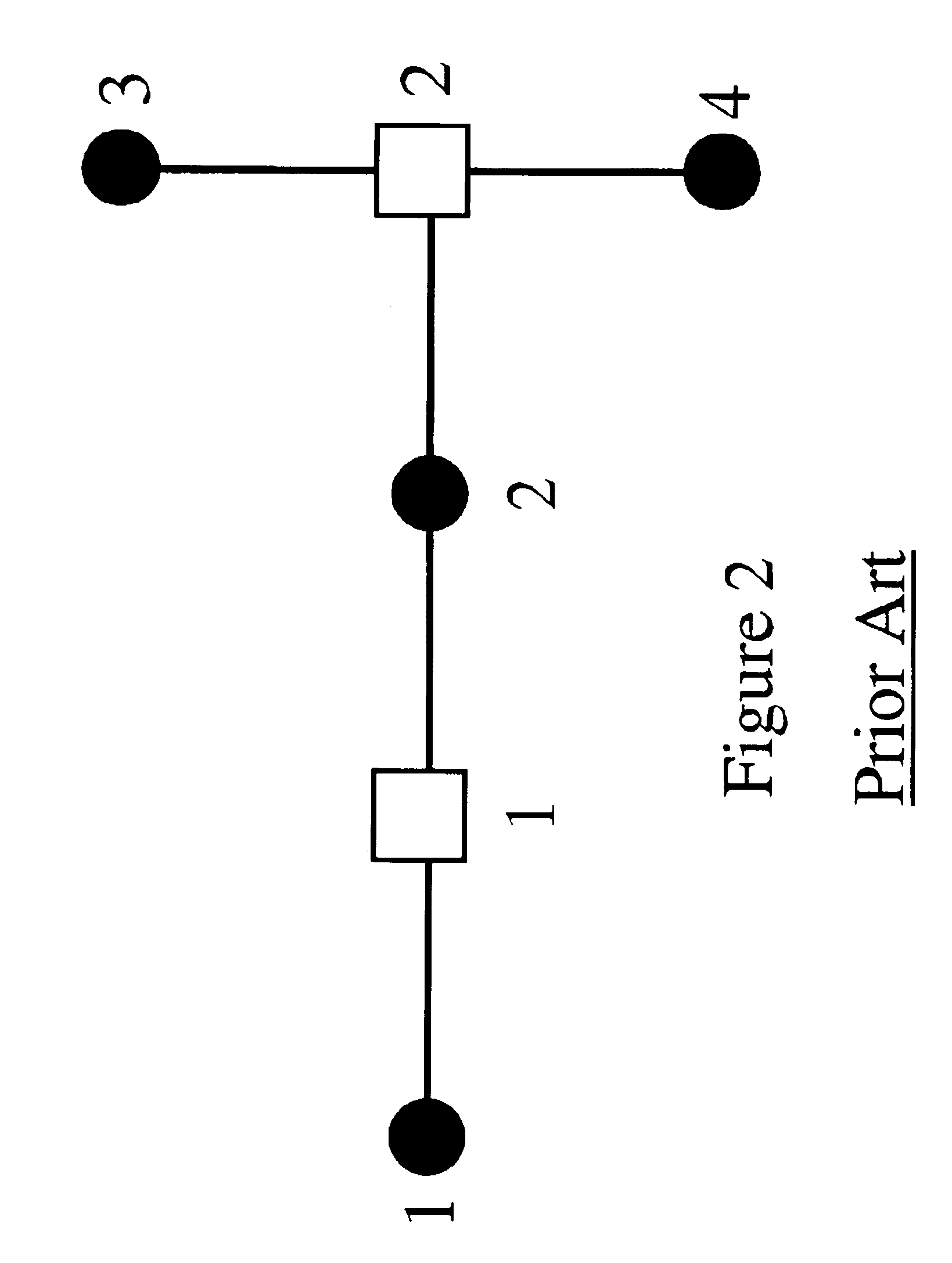Evaluating and optimizing error-correcting codes using a renormalization group transformation
- Summary
- Abstract
- Description
- Claims
- Application Information
AI Technical Summary
Benefits of technology
Problems solved by technology
Method used
Image
Examples
example
To better describe the RG method according to our invention, we give the following simple example. Recall the error-correcting code defined by the parity check matrix A=(11000111).(40)
We desire to determine the decoding failure rate at the second variable node b2. We initialize p11=p21=p22=p32=p42=x, q11=q12=q22=q23=q24=0, and b1=b2=b3=b4=x.
As shown in FIG. 3(a), we decorated the Tanner graph for this code. All of the variable nodes other than variable node 2 are leaf nodes, so we can renormalize any of them. According to our general method 900, we renormalize the node farthest from node 2, breaking ties randomly. If we select variable node 4, then we discard p42 and q24 and obtain new values q22=x, and q23=x using equation (37).
The new reduced size decorated Tanner graph is shown in FIG. 3(b). Next, we renormalize variable node 3. We discard nodes p32 and q23, and renormalize node q22 to the value 1−(1−x)2=2x−x2. The even smaller decorated Tanner graph is shown in FIG. 3(c). Next w...
PUM
 Login to View More
Login to View More Abstract
Description
Claims
Application Information
 Login to View More
Login to View More - R&D
- Intellectual Property
- Life Sciences
- Materials
- Tech Scout
- Unparalleled Data Quality
- Higher Quality Content
- 60% Fewer Hallucinations
Browse by: Latest US Patents, China's latest patents, Technical Efficacy Thesaurus, Application Domain, Technology Topic, Popular Technical Reports.
© 2025 PatSnap. All rights reserved.Legal|Privacy policy|Modern Slavery Act Transparency Statement|Sitemap|About US| Contact US: help@patsnap.com



